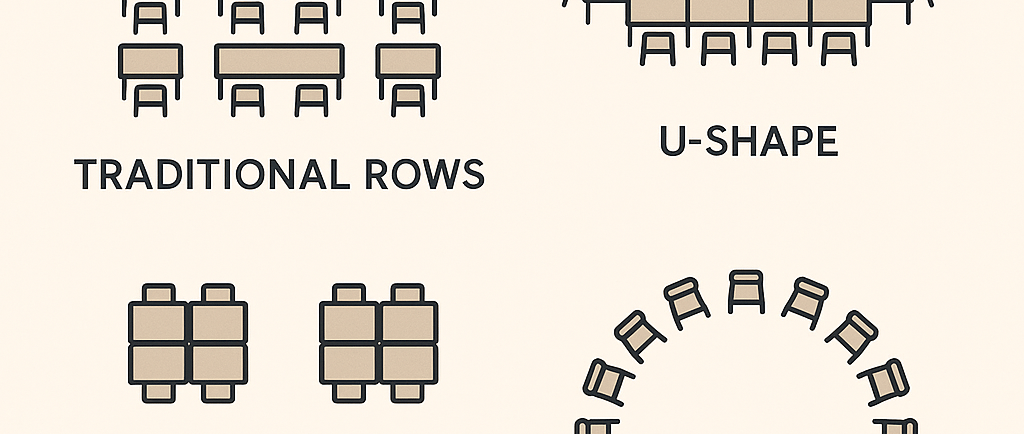Classroom Seating Arrangements for Effective Learning


Classroom seating arrangements play a crucial role in shaping student behaviour, engagement, and learning outcomes. While curriculum and teaching methods are essential, how students are physically arranged in the classroom can greatly influence their focus, collaboration, and even academic performance. A well-thought-out seating plan supports the teacher’s goals, suits the students’ learning styles, and fosters an inclusive and dynamic learning environment.
1. The Purpose Behind Seating Arrangements
The goal of any seating plan should be to maximize student participation, minimize distractions, and facilitate the learning objectives of the lesson. Teachers must consider several factors: the age of students, subject being taught, classroom size, and available furniture. Whether the aim is discussion, group work, or lecture-style instruction, the seating setup should align with these learning goals.
2. Common Seating Arrangements
a.Traditional Rows
This is the most common setup where students face the teacher in straight rows. It’s effective for teacher-centered instruction, standardized tests, or direct lectures. However, it limits collaboration and may not suit all learning styles.
b.U-Shape
Desks are arranged in a U, allowing all students to see each other and the teacher. This format encourages discussion, eye contact, and classroom interaction, making it ideal for debates and presentations
c.Clusters or Pods
Students sit in small groups, typically 4–6 per table. This is ideal for cooperative learning, brainstorming, or project-based activities. However, it requires careful classroom management to prevent off-task behavior.
d.Pairs
Desks are arranged in pairs, useful for think-pair-share activities or collaborative quizzes. It strikes a balance between individual focus and peer interaction.
Circle or Seminar Style
All students face each other in a circle. Best for open discussions, literature circles, and Socratic seminars, it encourages equal participation and democratic dialogue.
3. Flexibility is Key
The most effective classrooms often embrace flexible seating, where students have the freedom to choose or move seats based on the activity. This could include beanbags, stools, standing desks, or floor cushions. Research suggests that flexible seating can improve focus, motivation, and student ownership over learning.
4. Consider Individual Needs
Seating arrangements should also account for students with special needs, behavioral challenges, or social anxieties. For example, placing easily distracted students closer to the teacher or offering quiet corners for those who need it can make a big difference.
5. Technology Integration
Modern classrooms must also consider tech use. Desks should be arranged to ensure easy access to charging ports, avoid screen glare, and allow the teacher to monitor device usage. Group seating can enhance collaboration on digital projects.
Conclusion
An effective seating arrangement goes beyond aesthetics — it’s a strategic teaching tool. When chosen thoughtfully, it can promote student engagement, reduce behavioral issues, and create a supportive learning environment. Teachers should regularly evaluate and adjust seating layouts based on lesson objectives and student feedback. After all, a classroom’s physical setup can empower the minds seated within it.
